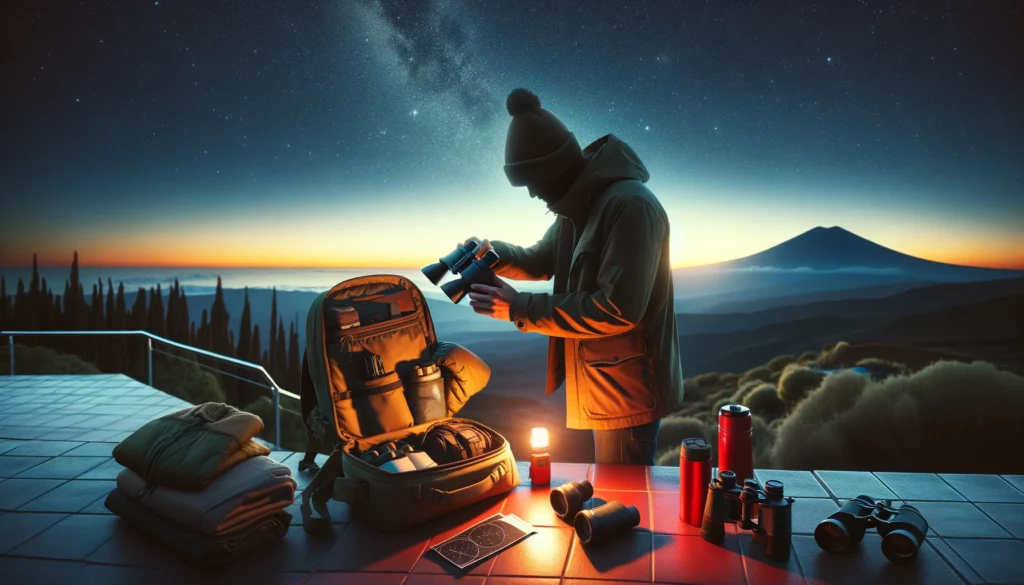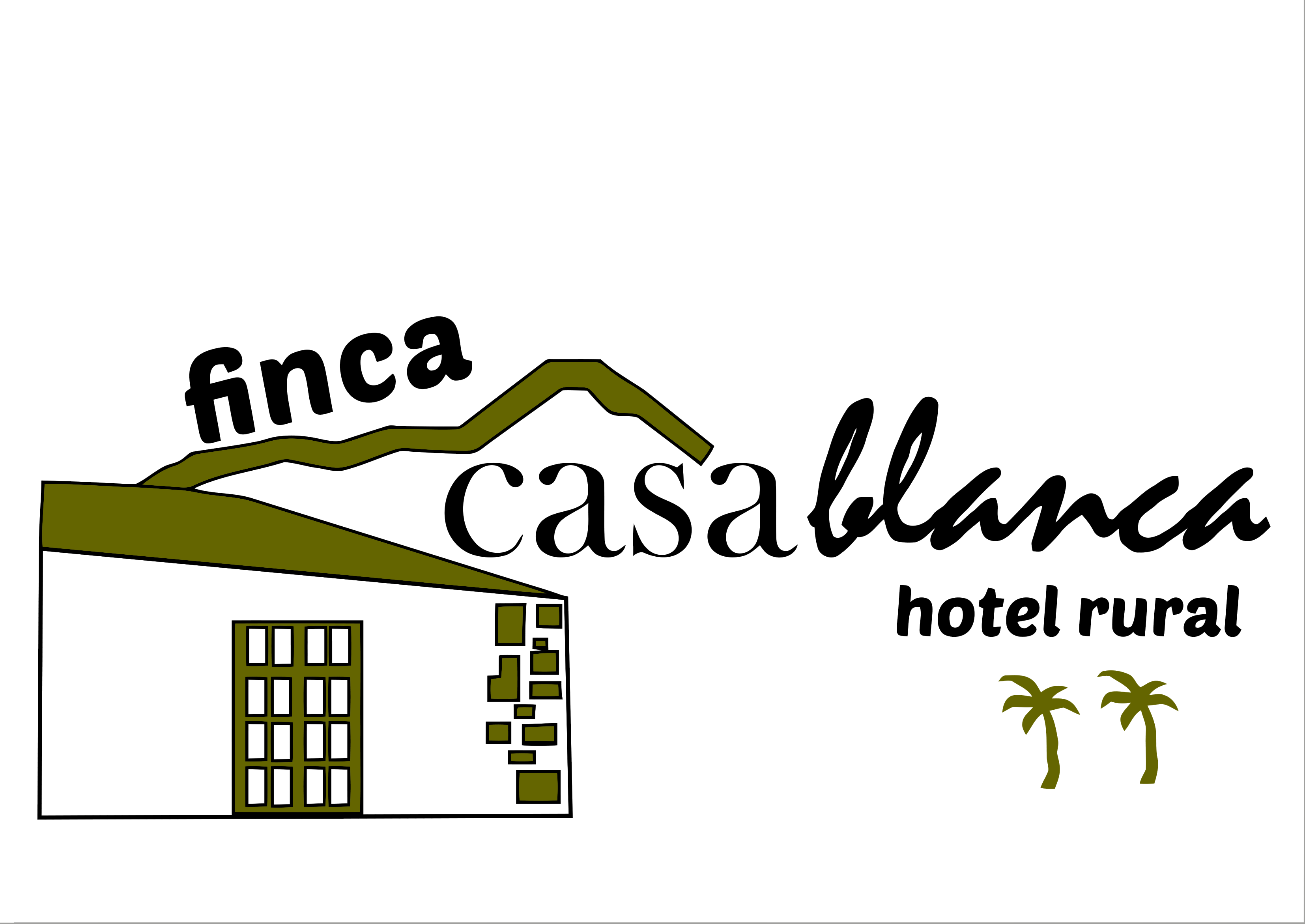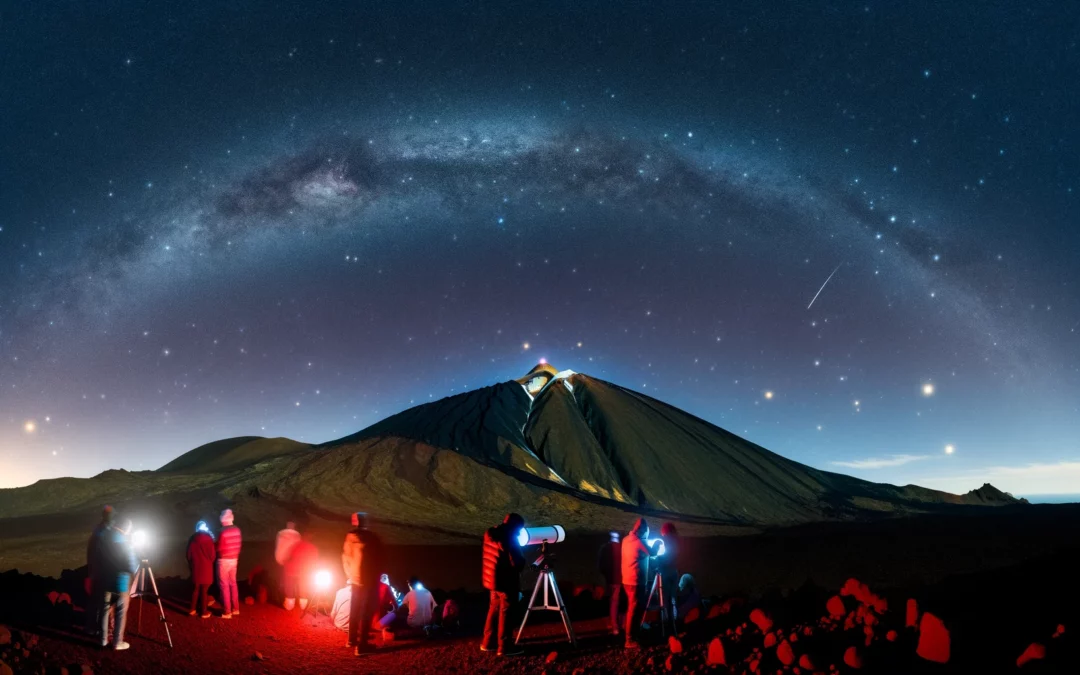In the heart of Tenerife rises the majestic Teide, a sleeping giant whose national park has been consecrated as one of the most impressive astronomical sanctuaries in the world. This natural setting, recognized as a “Starlight Destination” for its night sky of incomparable clarity and beauty, offers visitors an open window to the universe, where the constellations dance in the vastness of a black canvas and the galaxies are revealed in all their magnitude. . The unique atmosphere of this place, free of light pollution thanks to strict protection laws, ensures a stargazing experience that is both pure and unforgettable.
A few kilometers from this natural wonder, the Casablanca Rural Hotel stands as the ideal starting point for those eager to explore the mysteries of the cosmos. Located in Los Realejos, this charming refuge combines the serenity of its rural environment with privileged accessibility to the Teide National Park. From its facilities, which breathe history and nature, to the warmth of its hospitality, the hotel invites its guests to immerse themselves in an unparalleled astronomical adventure. Here, where the sky meets the earth, each night becomes a unique opportunity to trace constellations, wish on shooting stars and contemplate the immensity of the universe with a clarity and depth that only Teide can offer.
The Importance of the Night Sky of Tenerife
Tenerife is distinguished not only by its natural beauty and its diversity of landscapes, but also by being a privileged setting for astronomical observation, thanks to a unique combination of geographical and climatic factors. The island rises to the heavens with the imposing Teide, the third highest volcano in the world from its base on the ocean floor, reaching an altitude of more than 3,700 meters above sea level. This elevation is key to overcoming the thermal inversion layer, placing us above the clouds and much of the Earth’s atmosphere that distorts and filters starlight. As a result, observers find themselves under a blanket of unusually clear and stable skies, ideal for contemplating the stars.
Added to this natural advantage is pioneering legislation designed to protect the quality of the night sky. Tenerife and the Canary Islands have specific laws that regulate light pollution, air traffic and radio frequencies, in order to minimize any interference that may hinder astronomical observation. These measures have established the island as a global haven for astronomy, attracting scientists, hobbyists and tourists from around the world eager to explore the universe from one of the best places on the planet to do so.
The rich astronomical history of Tenerife is crowned by the presence of the Teide Observatory, one of the most important solar observatories in the world. This research center, located on the heights of Izaña, is a testament to the island’s long tradition in the study of the skies. Here, scientists use cutting-edge technology to decipher the mysteries of the sun and the distant universe, contributing significantly to the advancement of our astronomical knowledge. The existence of the observatory, together with the exceptional conditions for stargazing, underlines the importance of Tenerife not only as a tourist destination, but also as a valuable scientific and cultural resource.
Preparation for Stargazing
To ensure an optimal stargazing experience from Tenerife, especially around Teide National Park, proper preparation is crucial. Here we present some tips and recommendations to fully enjoy your nights under the starry sky:
Best Time of Year for Stargazing
Although Tenerife offers favorable conditions for astronomical observing all year round, the best views of the night sky are obtained from late spring to early autumn. During these months, the sky is usually clearer and the nights longer, providing a wider window to admire the stars. Also, consider the lunar phases; The new moon is ideal, since the absence of lunar light allows optimal visibility of the stars and the Milky Way.
Essential Equipment
- Warm clothing: Nights in the mountains can be cold, even in summer. Make sure you wear several layers of clothing, gloves, and a hat to keep warm.
- Red Light Flashlights: Red light minimizes disruption to your dark adaptation, allowing you to see the stars without affecting your night vision.
- Telescopes or binoculars: Although not strictly necessary, a good pair of binoculars or a telescope can greatly enrich your experience, allowing you to see details of planets, nebulae and galaxies.
- Cameras for astronomical photography: If you are interested in astrophotography, a DSLR camera with a stable tripod is essential. Cameras with long exposure capabilities can capture stunning images of the night sky.
Recommended Mobile Apps and Star Maps
For those less familiar with constellations or who simply want to enrich their experience, there are numerous mobile apps and star charts that can be of great help. Apps like Stellarium, SkyView, or Star Walk 2 offer real-time sky maps, identifying constellations, planets, and other celestial objects just by pointing your device toward the sky. These tools are not only useful for identification, but can also provide additional information about what you are observing, thus improving your understanding and appreciation of the night sky.
Step by Step Guide for a Night on El Teide
For an unforgettable experience under the starry sky of Teide, here we guide you step by step to make the most of your astronomical adventure.

Visit Planning
How and when to get there: Teide National Park is accessible all year round, but for stargazing, conditions are optimal from dusk to dawn. From the Hotel Rural Casablanca, you can opt for your own vehicle, which offers flexibility to stop at various observation points, or participate in organized tours that guarantee transportation and equipment. For those who prefer to adventure on their own, it is essential to check park opening hours and road conditions, especially in winter when snow may be found on higher routes.
Recommended Observation Locations
Within the park, some points offer privileged conditions for stargazing due to their accessibility and panoramic views:
- Chipeque Viewpoint: Offers spectacular views of the sky above the sea of clouds, especially at sunset.
- Llano de Ucanca: This vast plain near the volcano offers a clear horizon for observation.
- Parador Nacional del Teide: Located in the heart of the park, it is an excellent starting point for night observation routes, with the advantage of having services available at night.
Exploring these places allows visitors to enjoy an unobstructed view of the sky, making it possible to observe celestial phenomena in their greatest splendor.
Safety and Regulations
Safety is paramount when visiting the Teide National Park, both for visitors and for the preservation of the natural environment:
- Respect the environment: Stay on the marked trails and follow all park instructions to minimize the impact on the ecosystem.
- Prepare for the weather: Temperatures on Teide can be extremely cold at night, even in summer. Dress in layers and bring plenty of water and snacks.
- Stargaze responsibly: Use only red-light flashlights to avoid affecting the night vision of other visitors and to avoid light pollution that can interfere with stargazing.
Stargazing Experiences Offered
In the unique setting of Hotel Rural Casablanca, situated in the serene beauty of Los Realejos and in the shadow of the mighty Teide, guests have the exclusive opportunity to immerse themselves in the universe through carefully curated astronomical experiences. These experiences are designed to fascinate both astronomy fans and those who want to admire the majesty of the night sky for the first time.
Guided Night Tours
The hotel offers its guests the opportunity to participate in guided night tours to the Teide National Park, an immersive experience under the stars. These tours are led by professional astronomers and specialized guides who not only help identify constellations, planets and galaxies, but also share stories and knowledge about the cosmos. The experience is enriched with the use of high-powered telescopes, allowing participants to observe celestial details that would be impossible to capture with the naked eye.
Observation Sessions with Professional Astronomers
For those seeking a more in-depth experience, the hotel facilitates observing sessions with professional astronomers. These sessions are held in small groups and offer more personalized attention, allowing guests to learn about astrophotography, observing techniques, and the science behind what they see in the night sky. It’s a perfect opportunity to ask questions and gain a deeper understanding of the universe.
Reservation of Experiences
To ensure your place in these astronomical experiences, it is recommended to make a reservation in advance. Interested guests can contact hotel staff directly, either at the time of booking their stay or during their stay. The hotel provides all necessary information, including tour times, meeting points, and any specific requirements for participation, such as appropriate clothing for nighttime mountain conditions.
Tips for Capturing the Night
Capturing the immensity of the night sky over the majestic Teide is an experience that combines the passion for astronomy with the art of photography. For those who want to take a piece of the eternal night home, here are some basic night photography tips and camera setup suggestions for beginners.

Necessary Equipment
- Camera with manual adjustment capacity: Essential to control exposure, aperture, and ISO sensitivity.
- Sturdy tripod: Essential to keep the camera stable during long exposures.
- Remote shutter or camera timer: To avoid vibrations when taking the photo.
Camera Settings
- Manual Mode (M): Allows complete control over exposure.
- Wide aperture: Use the lowest f/ value possible (f/2.8 is ideal) to let in the most light.
- High ISO: Start with an ISO of 1600 and adjust as necessary. Keep in mind that very high values can introduce noise into the image.
- Long exposure: Start with exposures of around 20 to 30 seconds. Longer exposures will capture more stars, but may also result in “jittery” stars due to the Earth’s rotation.
Techniques for Beginners
- Focus at infinity: If your lens allows it, adjust the focus to infinity to ensure that the stars appear sharp. Otherwise, use Live View and digital zoom to manually focus on a bright star.
- Composition: Try to include elements in the foreground (such as the Teide landscape) to add interest and perspective to your photographs of the starry sky.
- Trial and error: Night photography requires patience and experimentation. Feel free to adjust settings and try different compositions.
Applications and Additional Resources
Consider using apps like PhotoPills or The Photographer’s Ephemeris, which can help you plan your photo sessions based on the position of the stars and the Milky Way. These tools are incredibly useful for previewing your framing and the best time to capture the night sky.
Additional Information
To enrich your Teide stargazing experience and facilitate your astronomical adventure, here are some links to useful resources that offer information from planning to learning and booking experiences:
- Teide National Park Website: For general information, schedules, visiting regulations, and activities available within the park. Visit the official site of the Teide National Park.
- Night Sky Forecasts: Use apps and websites like Clear Outside or Time and Date to find out weather conditions and star visibility to plan your viewing.
- Reservation Pages for Astronomical Experiences: Platforms such as Volcano Teide offer reservations for guided tours and astronomical experiences on Teide, including observations with telescopes and night walks.
- Mobile Applications for Stargazing: Tools like Stellarium Mobile or SkySafari will help you identify constellations, planets, and satellites in real time, improving your observing experience.
- Astrophotography Information: For those interested in capturing the beauty of the night sky, sites like Lonely Speck offer guides and tips on how to get started with astrophotography.
These resources will provide you with a solid foundation to plan your adventure, learn about what you are observing, and ensure that you have all the information necessary for a safe and enriching experience under the stars of Teide.

